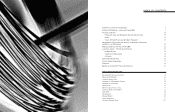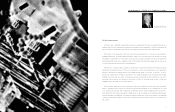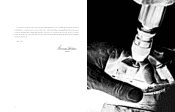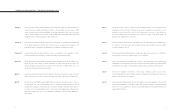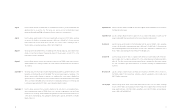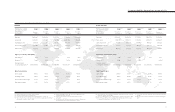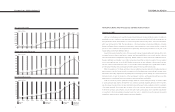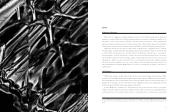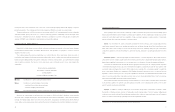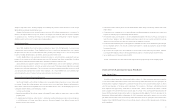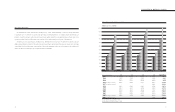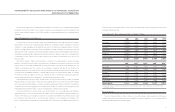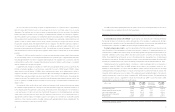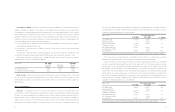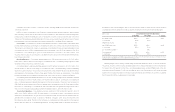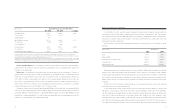LensCrafters 2003 Annual Report Download - page 9
Download and view the complete annual report
Please find page 9 of the 2003 LensCrafters annual report below. You can navigate through the pages in the report by either clicking on the pages listed below, or by using the keyword search tool below to find specific information within the annual report.
17
GEOGRAPHIC EXPANSION AND INVESTMENTS
In 2003, South America and Asia were among the most challenging markets. Asia was particularly affected by the
outbreak of the Severe Acute Respiratory Syndrome (SARS), All the while, Luxottica Group continued to monitor
closely the evolution of certain emerging markets, where it might consider setting up a direct distribution network
through new, “light” subsidiaries.
Following the consolidation of the European distribution activities in Sedico in 2002, in North America the
Canadian distribution center was completely merged into Avant Garde’s existing distribution center in the U.S. This
immediately resulted in an improvement in the service level offered to customers, as it had already happened in
Europe.
Other investments in 2003 were mainly associated with technological improvements to the Group’s manufacturing
facilities.
16
MANUFACTURING
During the year, at the manufacturing level management’s efforts focused on improving technology, optimizing the
structure and increasing the use of information technology, all while keeping industrial costs for the year firmly under
control. This resulted in improved service to customers, also in terms of after-sales support, and delivery lead-time.
During the first half of the year, at the time of the expiration of the Armani license the Group’s manufacturing
division needed to contain production capacity, without reducing efficiency and productivity standards, while reducing
fixed costs. Luxottica Group’s extremely flexible manufacturing structure enabled it to keep production capacity nearly
unchanged at the Italian plants, while reducing it in China.
In Italy, the acquisition of the Versace brand brought a new plant in Gazzada near Varese to the Luxottica family.
Initially, the production and quality standards of IC Optics, which formerly produced and assembled semi-finished
products, metal and plastic frames, were not in line with the Group’s standards. Following the acquisition, the plant
started its integration into Luxottica Group’s existing Italian manufacturing structure, which included reorganization of
its production activity, which is now limited to the finishing and assembling of metal frames, in line with the practice of
tailoring the production of each plant to a specific production technology. Other manufacturing activities were moved
to others plants. By the end of 2003, the IC Optics Gazzada plant had already achieved the same efficiency standards
of the other Luxottica Group’s plants. In 2004, the plant will be moved into a new, smaller building, currently under
construction, and better equipped to accommodate the new production.
In 2003, the Lauriano plant saw an increase in its production capacity of plastic lenses, mainly of APX lenses,
which is a new, improved material created to avoid certain problems of polycarbonate lenses. After a few months of
testing aimed at reducing waste, in the second half of the year the plant started production on a large scale and, in a
few months, replaced polycarbonate lenses with APX almost completely.
Currently, Luxottica Group’s own production capacity of sunglass lenses nearly covers the Group’s total need for
crystal and plastic lenses, with the only exception of polarized lenses and some specific colors. With respect to this, to
increase overall production capacity and reduce waste, a new, more efficient machine for plastic lenses was delivered
in December.


